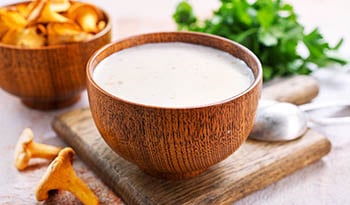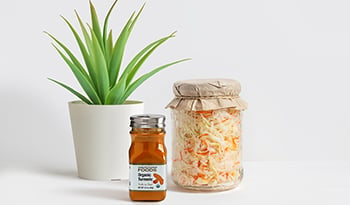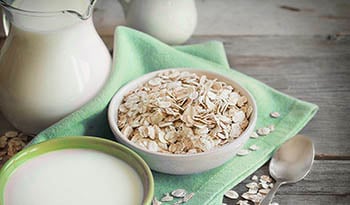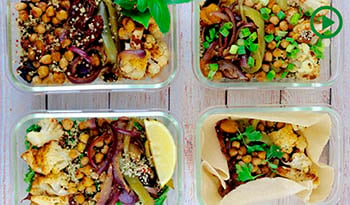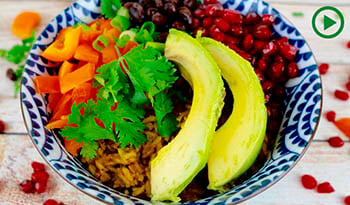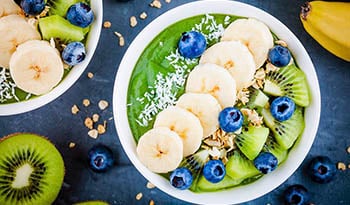Подсластитель из обезьяньего фрукта: откройте для себя удивительные преимущества и изучите полезные рецепты
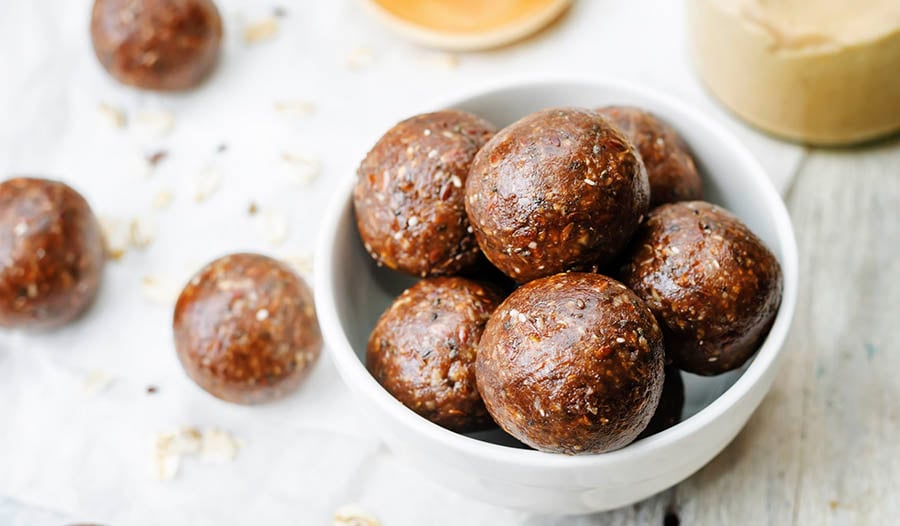
Что такое обезьяний фрукт?
Обезьяний фрукт(Siraitia grosvenorii) — это небольшой зеленый фрукт, произрастающий на юге Китая и известный как Ло Хань Го.
Экстракт этого фрукта, используемый в качестве подсластителя, почти в 300 раз слаще сахара и завоевывает огромную популярность как некалорийный подсластитель. Но это не новый подсластитель, поскольку обезьяний фрукт используется в Китае уже почти тысячу лет.
Почему обезьяний фрукт такой сладкий?
Сладкий вкус обезьяньего фрукта в основном обусловлен сложными веществами, известными как могрозиды. Эти соединения обычно составляют около 1% мякоти свежих фруктов. Путем экстракции можно получить порошок, содержащий 80% могрозидов. Этот экстракт обезьяньего фрукта является наиболее широко доступной формой подсластителя.
В США экстракт обезьяньего фрукта одобрен Управлением по контролю за продуктами и лекарствами США (FDA) в качестве продукта GRAS (общепризнанного безопасным) в качестве подсластителя. Нет никаких ограничений на употребление фрукта или экстрактов из него в качестве подсластителя.
Как производится подсластитель из обезьяньего фрукта?
Кожуру и семена удаляют из всех фруктов, чтобы получить экстракт обезьяньего фрукта, который используется в качестве подсластителя. Затем мякоть плодов протирают или концентрируют, удаляя воду, а затем обрабатывают пектиназой или другими ферментами для расщепления пектина. Для улучшения вкуса неприятные ароматические соединения сначала удаляют путем фильтрации, адсорбции с помощью древесного угля или бентонита или осаждают желатином или другими гелеобразующими агентами. Затем используют низкое давление для выпаривания некоторых серосодержащих соединений и сушки экстракта, который затем пастеризуют для инактивации оставшихся природных ферментов, которые могут разлагать экстракт и уничтожать любые микроорганизмы.
Какова польза для здоровья от использования подсластителя обезьяньего фрукта?
Основное преимущество экстракта обезьяньего фрукта заключается в том, что он является некалорийным подсластителем, заменяющим сахар. Это преимущество позволяет людям наслаждаться добавлением сладостей в свой рацион без калорий и влияния на уровень сахара в крови. Обезьяний фрукт полезен людям с диабетом. Он не оказывает вредного влияния на контроль уровня сахара в крови.
Факты показывают, что он помогает поддерживать нормальный уровень сахара в крови и обмен веществ, активируя ключевой фермент, регулирующий уровень энергии в организме, — протеинкиназу, активируемую АМФ (AMPK). Воздействуя на этот путь, экстракт обезьяньего фрукта улучшает усвоение глюкозы клетками, где она превращается в энергию. Активация AMPK также улучшает метаболизм жиров и помогает сжигать жирные кислоты для получения энергии.
Кроме того, в доклинических исследованиях могрозиды, содержащиеся в экстракте обезьяньего фрукта, также продемонстрировали значительное биологическое действие, включая антиоксидантное, противовоспалительное, защитное действие на мозг и другие полезные для здоровья эффекты. Это означает, что использование экстракта обезьяньего фрукта в качестве подсластителя может принести много пользы для здоровья, помимо снижения калорий или улучшения контроля уровня сахара в крови.
Как подсластитель из обезьяньего фрукта используется в кулинарии?
Подсластители из обезьяньего фрукта можно использовать точно так же, как сахар, в любом рецепте. Следуйте инструкциям на этикетке при определении количества подсластителя обезьяньего фрукта, равного рафинированному сахару.Кроме того, он растворяется и смешивается так же хорошо, как и сахар.
Экстракт обезьяньего фрукта растворяется и смешивается так же хорошо, как и сахар. Подсластитель особенно хорошо подходит для рецептов с мягкой текстурой и насыщенным вкусом. Ниже приведены несколько рецептов, подчеркивающих универсальность экстракта обезьяньего фрукта. В этих рецептах используется подсластитель обезьяньего фрукта, который заменяет сахар в соотношении 1:1.
Рецепт торта без муки с малиной, шоколадом и обезьяньим фруктом
Шоколадный торт без муки — любимый рецепт даже тех, кто не употребляет глютен, потому что он имеет насыщенную текстуру, напоминающую пудинг. Этот вкусный вариант еще больше усиливает вкус, добавляя поверх торта свежий малиновый соус.
Ингредиенты:
- 1 ст. л. кокосового масла
- 12 унций измельченного горького шоколада
- 12 столовых ложек несоленого сливочного масла
- 1 ст. л.порошок эспрессо
- 1/4 чайной ложки соли
- 6 яиц
- Полтора стаканаподсластителя из обезьяньего фруктаплюс 2 столовые ложки подсластителя из обезьяньего фрукта
- 12 унций замороженной или свежей малины
Приготовление:
- Нагрейте духовку до 165 градусов по Цельсию (325 градусов по Фаренгейту). Приготовьте 9-дюймовую форму для выпечки, обернув ее фольгой и смазав внутреннюю часть кокосовым маслом.
- Поместите шоколад, масло, порошок эспрессо и соль в миску, подходящую для использования в микроволновой печи.
- Растопите ингредиенты в миске, разогрев в микроволновой печи в течение 30 секунд, перемешивая и повторяя, пока они не растают. Отложите, чтобы остыть.
- Поместите яйца и подсластитель из обезьяньего фрукта в большую миску и взбивайте около 10 минут, пока яйца не станут светло-желтыми и густыми.
- Постепенно добавляйте шоколадную смесь к яичной смеси, непрерывно помешивая.
- Выложите тесто в форму для выпечки и поставьте в духовку.
- Готовьте, пока зубочистка, вставленная в пирог, не станет влажной, но не липкой. Это займет от 45 до 55 минут.
- Пока пирог готовится, приготовьте малиновый соус, смешав ягоды и 2 столовые ложки подсластителя из обезьяньего фрукта на сковороде на среднем огне. Тушите на медленном огне, пока ягоды не сломаются, а соус не загустеет. Это займет от 10 до 15 минут. При желании процедите семена из соуса, а затем отложите, пока пирог не закончится.
- Выньте пирог из духовки и дайте ему остыть.
- Выньте пирог из формы для выпечки, нарежьте порциями и посыпьте каждый кусочек ложкой соуса.
Рецепт жирных бомб из обезьяньего фрукта, миндаля и помадки
Жирные бомбы — любимая закуска людей, соблюдающих кетогенную диету. Они сочетают полезные жиры с некоторыми вкусными ароматизаторами, чтобы создать небольшое лакомство, удовлетворяющее тягу к десертам, не нарушая при этом диету человека. В этом рецепте сочетаются вкусы шоколада, миндального масла и обезьяньего фрукта, создавая нечто поистине восхитительное. Этот кетогенный, экологически чистый веганский продукт с низким содержанием углеводов и без зерна, глютена, молочных продуктов и сахара.
Ингредиенты:
- 1 стакан кокосового масла комнатной температуры
- 1 стакан миндальной пасты
- 2 ст. л. подсластителя из обезьяньего фрукта
- 1/3 стакан кокосовой муки
- 1/2 стакан какао-порошка
- 1/4 ч.л.розовой гималайской соли
Приготовление:
- Смешайте кокосовое масло и миндальное масло и нагрейте до полного растворения на плите или в микроволновой печи.
- Перемешайте масло и сливочное масло до полного смешивания и снимите с плиты.
- Добавьте обезьяний фрукт, кокосовую муку, какао-порошок и соль.
- Поместите смесь в морозильную камеру на 90 минут до образования твердого, но слегка формуемого теста.
- Разделите смесь на порции по две столовые ложки и скатайте каждую порцию в шарик.
- Положите шарики на плоский поднос и заморозьте их еще на 15 минут.
- Охладите до готовности к подаче.
- Подавайте и наслаждайтесь.
Рецепт печенья с обезьяньим фруктом и шоколадной крошкой без глютена
Людям, жаждущим печенья с шоколадной крошкой, не нужно сдаваться и есть нездоровое печенье, содержащее нездоровые обработанные ингредиенты. Печенье с шоколадной крошкой может быть достаточно полезным лакомством с правильными ингредиентами. В этом рецепте используется сочетание миндальной муки, темного шоколада и подсластителя из обезьяньего фрукта, чтобы приготовить вкусное печенье, которое понравится даже тем, кто не соблюдает диету.
Ингредиенты:
- 1/3 чашки подсластителя из обезьяньего фрукта
- 2 чашки миндальной муки
- 1/4 ст. л. гималайской соли
- 1/2 ст. л. питьевой соды
- 1/2 чашки топленого масла или сливочного масла
- 1 взбитое яйцо
- 1 ст.л. экстракта ванили
- 1 чашка крошку из темного шоколада
Приготовление:
- Разогрейте духовку до 176 °C (350 °F) и застелите противень пергаментной бумагой.
- Смешайте обезьяний фрукт, миндальную муку, соль и пищевую соду в кухонном комбайне и несколько раз перемешайте смесь.
- Добавьте в смесь сливочное масло и взбивайте до состояния грубой крошки.
- Переложите в большую миску и добавьте взбитое яйцо и ваниль до образования влажного теста.
- Осторожно добавьте шоколадную крошку.
- Раскатайте тесто в шарики размером 1 дюйм. Теста должно хватить примерно на 14-16 печенья.
- Поместите шарики из теста на противень, оставив между ними не менее 1 дюйма. Не расплющивайте шарики, потому что во время выпечки они естественным образом расплющится.
- Готовьте до коричневого цвета. Это займет примерно 13 минут.
- Дайте остыть в течение 10 минут.
- Храните печенье в герметичном контейнере до готовности к подаче.
- Подавайте и наслаждайтесь.
Источники:
- Wu J, Jian Y, Wang H, et al. A Review of the Phytochemistry and Pharmacology of the Fruit of Siraitia grosvenorii (Swingle): A Traditional Chinese Medicinal Food. Molecules. 2022 Oct 5;27(19):6618. doi: 10.3390/molecules27196618. PMID: 36235155; PMCID: PMC9572582.
- Shivani, Thakur BK, Mallikarjun CP, et al. Introduction, adaptation and characterization of monk fruit (Siraitia grosvenorii): a non-caloric new natural sweetener. Sci Rep. 2021 Mar 18;11(1):6205.
- Liu H , Qi X , Yu K , Lu A , Lin K , Zhu J , Zhang M , Sun Z . AMPK activation is involved in hypoglycemic and hypolipidemic activities of mogroside-rich extract from Siraitia grosvenorii (Swingle) fruits on high-fat diet/streptozotocin-induced diabetic mice. Food Funct. 2019 Jan 22;10(1):151-162.
- Li H, Li R, Jiang W, Zhou L. Research progress of pharmacological effects of Siraitia grosvenorii extract. J Pharm Pharmacol. 2022 Jul 15;74(7):953-960.
ОТКАЗ ОТ ОТВЕТСТВЕННОСТИ:Информация, содержащаяся в Центре здоровья, не предназначена для постановки диагноза...













































































 Содержание
Содержание



